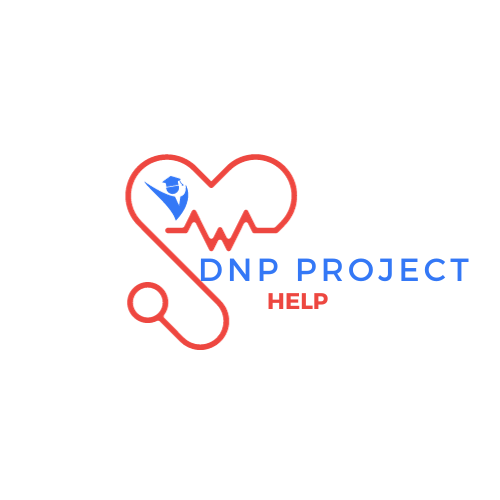
Standards for Quality Improvement Reporting Excellence
This rubric is based on the SQUIRE 2.0 guidelines, which help students format their DNP Project Papers. Faculty advisors and the DNP Council use this rubric to judge the quality of each student’s DNP Project, which is part of the Clinical Scholarship Portfolio.
Table of Contents
Each part of the project is graded as either unsatisfactory, passing, or exemplary. To pass, students must earn at least a passing score in every part of the evaluation. If a student gets an unsatisfactory in any area, they must revise that section until they receive a passing score.
SQUIRE 2.0 Guidelines
| Evaluation Sub-features | Unsatisfactory (Score=0) | Passing (Score=1) | Exemplary (Score=2) |
| INTRODUCTION | Problem description· Described the nature and significance of the local problem or system dysfunction identified for DNP Project· Described characteristics of organizations or microsystem in which QI project to be done | · Incomplete description of setting and/or local problem. | · Satisfactorily describes local setting and local problem for the QI project. | · Thorough description of local setting/context and local problem. |
| Available knowledge· Summarized current knowledge of problem, including relevant previous studies· Provided brief, global or national summary of current knowledge of overall problem being addressed | · Incomplete: review of literature; identification of gaps; lacks clarity for significance of problem. | · Satisfactory: review of literature and identification of gaps; clear significance of problem. | · Thorough: Review of literature and identification of gaps; Very clear significance of problem at national level. | |
| Rationale· Described Informal or formal frameworks, models, concepts, and/or theories used to explain the problem;· any reasons or assumptions that were used to develop the intervention(s);· and reasons why the intervention(s) was expected to work | · Incomplete description of rationale underlying project | · Satisfactory descriptions of rationale underlying project | · Clear and exceptional descriptions of rationale underlying project | |
| Specific Aim· Described specific aim (changes/improvements in processes and/or outcomes) of proposed intervention· Specifies who (champions, supporters) and what (events, observations) triggered decision to make changes, and why now (timing) | · Incomplete description of aims and specifics of support and rationale. | · Satisfactory description of aims and specifics of support and rationale. | · Clear, achievable aims and interventions and description of specific support & rationale. |
Answer
Problem Description
Aggression in acute psychiatric units constitutes significant adverse effects on patient safety, staff welfare, and healthcare outcomes. Aggressive behaviors among psychiatric inpatients affect about 50% of psychiatric patients, which results in higher rates of physical restraint usage, prolonged hospital stays, and harm to both patients and caregivers (Caruso et al., 2021). The project site, an adult inpatient psychiatric unit in Houston, Texas, runs an inpatient psychiatric facility in similar circumstances. Despite annual de-escalation training mandates, staff report persistently high aggression rates attributed to insufficient refresher courses, low adherence to protocols, and a cultural reliance on reactive measures. Unit managers note that aggressive incidents contribute to staff burnout, turnover, and reduced patient trust (UTHealth, 2025). This local problem reflects broader systemic issues: a lack of standardized, evidence-based training programs tailored to psychiatric contexts and inadequate reinforcement of de-escalation skills (Goodman et al., 2020).
Available Knowledge
Healthcare facilities struggle to implement active de-escalation strategies effectively because they still prioritize reactive solutions such as physical restraint. Butterworth (2022) reports that despite the apparent physical and psychological injuries that restraint and seclusion can cause to patients, most staff still consider these methods the best. Psychiatric healthcare lack structured evidence-based training programs to establish better methods for lowering coercion and aggression levels to create safer healthcare environments. Lim et al. (2023) underscore that professionals dealing with psychiatric individuals are at the highest risk of workplace violence. Globally, psychiatric healthcare workers face the highest rates of workplace violence compared to other healthcare sectors, with approximately 50% of psychiatric inpatients exhibiting aggressive behaviors (Lim et al., 2023). In light of this, much research has been conducted over the years to control the threats of patient-to-staff aggression in psychiatric settings. However, in the last decade, research has taken a different turn after the prevalent use of physical restraint measures was discouraged because of their aggressive and harmful nature. Safer aggression prevention and mitigation strategies, such as de-escalation, were introduced in mental hospitals (Lim et al., 2023).
De-escalation training often proves effective in managing aggression and promoting using de-escalation instead of reactive measures. Aggression management training helped nurses perceive de-escalation as more acceptable and effective than reactive measures ( Ata & Yilmaz et al., 2022; Goodman et al., 2025). Cluster RCTs demonstrate that structured programs reduce aggression incidents by 28% and physical restraint use by 35% (Celofiga et al., 2022; Ye et al., 2021). For example, a multisite trial of the Safewards model in the UK reduced conflict behaviors by 15% through staff training in communication and empathy (Bowers et al., 2015). The study highlighted that patient-to-staff rapport effectively increases the effectiveness of de-escalation techniques. Similarly, Communication, Response, Solution, Care, and Environment (CRSCE) based training in China lowered restraint use by 48% (Ye et al., 2021). These findings align with qualitative studies where staff emphasized rapport-building and early intervention as critical to de-escalation success (Price et al., 2024).
Staff resistance, inconsistent training quality, and environmental stressors (e.g., understaffing and noisy wards) hinder de-escalation adoption (Goodman et al., 2020). In forensic settings, poor interdisciplinary communication and patient involvement in care planning exacerbate challenges (Price et al., 2024).
Rationale
Deming’s Plan-Do-Study-Act (PDSA) model was chosen to structure this project (Deming Institute, 2025). The iterative cycles of PDSA are consistent with the requirement for continuous adaptation in dynamic psychiatric environments. The framework assumes that staff competency in de-escalation can be improved by repeated practice and feedback. It also assumes that stakeholder collaboration and data-driven adjustments can lead to organizational buy-in (Katowa Mukwato et al., 2021).
A 4-month training program will be designed to fill in the gaps identified in the literature. De-escalation should help to decrease aggression by giving staff the capacity to deal with triggers before they have to resort to coercive measures. This hypothesis is supported by evidence from CRSCE and Safewards models (Ye et al., 2021; Bowers et al., 2015).
Specific Aim
This project aims to reduce the rate of patient-staff aggression in an adult inpatient psychiatric unit by 10% by implementing a 4-month systematic de-escalation training program for healthcare workers.
The project also aims to train 80% of workers in de-escalation techniques, increase adherence to de-escalation protocols by 25%, and reduce the use of physical restraint by 15%.
Triggers for Change
The primary trigger for this project is the unit managers’ and staff report of reduced morale and burnout in the face of aggressive altercations with psychiatric patients. The motivation for this project is to improve the methodology used to handle patient-to-staff aggression. Patients also complain of the psychological and physical harm they suffer from the widespread use of restraint measures. Issues like these call for measures of de-escalation.
The need for action was underscored by a recent surge in aggression-related injuries (e.g., sprains, psychological trauma).
Patient safety metrics are prioritized for the facility’s accreditation review in six months, opening a strategic window of opportunity for intervention.
Reference
Abozaid, D. A., Momen, M., Ezz, N. F. A. E., Ahmed, H. A., Al-Tehewy, M. M., El-Setouhy, M., & Houssinie, M. E. (2022). Patient and visitor aggression de-escalation training for nurses in a teaching hospital in Cairo, Egypt. BMC Nursing, 21(1), 63.
Ata, E. E., & Yılmaz, E. B. (2022). Evaluation of Aggression Management Training for Nursing Students: A Quasi-Experimental Study. Journal of International Health Sciences and Management, 8(16), 78-87.
Baig, L., Tanzil, S., Shaikh, S., Hashmi, I., Khan, M. A., & Polkowski, M. (2018). Effectiveness of training on de-escalating violence and managing aggressive behavior faced by health care providers in a public sector hospital of Karachi. Pakistan Journal of Medical Sciences, 34(2), 294–299.
Bowers, L., James, K., Quirk, A., Simpson, A., Stewart, D., & Hodsoll, J. (2015). Reducing conflict and containment rates on acute psychiatric wards: The Safewards cluster randomized controlled trial. International journal of nursing studies, 52(9), 1412-1422.
Butterworth, H., Wood, L., & Rowe, S. (2022). Patients and staff members’ experiences of restrictive practices in acute mental health inpatient settings: Systematic review and thematic synthesis. BJPsych Open, 8(6), e178.
Caruso, R., Antenora, F., Riba, M., Belvederi Murri, M., Biancosino, B., Zerbinati, L., & Grassi, L. (2021). Aggressive behavior and psychiatric inpatients: a narrative review of the literature with a focus on the European experience. Current psychiatry reports, 23, 1-12.
Celofiga, A., Kores Plesnicar, B., Koprivsek, J., Moskon, M., Benkovic, D., & Gregoric Kumperscak, H. (2022). Effectiveness of de-escalation in reducing aggression and coercion in acute psychiatric units. A cluster randomized study. Frontiers in psychiatry, 13, 856153.
Deming Institute. (2025). PDSA cycle. The W. Edwards Deming Institute. https://deming.org/explore/pdsa/
DOH. (2022). PDSA: Plan-Do-Study-Act. MN Dept. of Health. https://www.health.state.mn.us/communities/practice/resources/phqitoolbox/pdsa.html
Goodman, H., Papastavrou Brooks, C., Price, O., & Barley, E. A. (2020). Barriers and facilitators to the effective de-escalation of conflict behaviours in forensic high-secure settings: a qualitative study. International journal of mental health systems, 14, 1-16.
Haefner, J., Dunn, I., & McFarland, M. (2021). A quality improvement project using verbal de-escalation to reduce seclusion and patient aggression in an inpatient psychiatric unit. Issues in Mental Health Nursing, 42(2), 138–144.
Katowa-Mukwato, P., Mwiinga-Kalusopa, V., Chitundu, K., Kanyanta, M., Chanda, D., Mwelwa, M. M., … & Carrier, J. (2021). Implementing Evidence Based Practice nursing using the PDSA model: Process, lessons and implications. International Journal of Africa Nursing Sciences, 14, 100261.
Lavelle, M., Stewart, D., James, K., Richardson, M., Renwick, L., Brennan, G., & Bowers, L. (2016). Predictors of effective de‐escalation in acute inpatient psychiatric settings. Journal of Clinical Nursing, 25(15-16), 2180-2188.
Lim, Z. Y., Idris, D. R., Abdullah, M. A. L., & Omar, R. (2023). Violence toward staff in the inpatient psychiatric setting: Nurses’ perspectives: A qualitative study. Archives of psychiatric nursing, 46, 83-90.
Page MJ, McKenzie JE, Bossuyt PM, Boutron I, Hoffmann TC, Mulrow CD, et al. The PRISMA 2020 statement: an updated guideline for reporting systematic reviews. BMJ 202 doi: 10.1136/bmj.n71
Price, O., Brooks, C. P., Johnston, I., McPherson, P., Goodman, H., Grundy, A., & Bee, P. (2024). Development and evaluation of a de-escalation training intervention in adult acute and forensic units: The EDITION systematic review and feasibility trial. Health Technology Assessment, 28(3), 1–164.
Rogers, B., St. Marie, B., Wesemann, D., & Nopoulos, P. (2025). Evaluating De-Escalation Training for Direct and Indirect Employees Caring for Residents With Huntington’s Disease. Journal of the American Psychiatric Nurses Association, 31(1), 76-82.
Ye, J., Xia, Z., Wang, C., Liao, Y., Xu, Y., Zhang, Y., … & Xiao, A. (2021). Effectiveness of CRSCE-based de-escalation training on reducing physical restraint in psychiatric hospitals: a cluster randomized controlled trial. Frontiers in psychiatry, 12, 576662.


